Papers by Deepak G A U T A M Tutunga
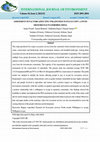
International Journal of Environment, 2021
This study prioritized five major ecosystem services from the watershed which included clean and ... more This study prioritized five major ecosystem services from the watershed which included clean and silt less water, conservation and biodiversity, fresh environment, tourism, and beautiful landscape. Among these ecosystem services, the fresh environment was ranked first based on respondent’s importance. We conducted multiple focus group discussions, key informant surveys, a household survey, and performed statistical analysis to derive results. About 120 respondents were surveyed, out of which 60 were from upstream and 60 were from the downstream community. The majority of the respondents agreed to participate in the PES mechanism for the conservation of watersheds. The present study has estimated average WTP NRs 114.51/ropani/year/HH and WTA of NRs118.18/ropani/year/HH for conservation of watershed. The probit model was adopted to identify the factors affecting people to pay or accept for ecosystem services. Respondent’s socio-economic characteristics such as gender (female), househo...
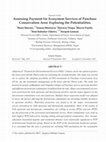
Janapriya Journal of Interdisciplinary Studies, 2021
Adoption of “Payment for Environmental Services (PES)” scheme can be one option to protect the fo... more Adoption of “Payment for Environmental Services (PES)” scheme can be one option to protect the forest area and the Phewa Lake for sustaining the existing benefits. The study was carried out to explore the adoption possibility of PES mechanism in Panchase Conservation Area (PCA) for the sustainable management of the forest and the Phewa Lake. The study was focused on people of Bhadaure and Chapakot villages of Panchase area as upstream dwellers and different downstream communities benefitted from the lake. Major environmental services were prioritized for both upstream and downstream dwellers and the major impacts on the downstream communities were also found out. Multiple linear regression model was adopted to assess the factors affecting the downstream communities for providing suitable incentives to upstream dwellers. Watershed protection was found to be the major environmental service prioritized by both upstream and downstream respondents. Most of the people of both upstream and...
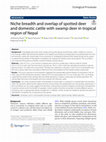
Ecological Processes, 2022
Background Knowledge about the niche overlap among wild species and domestic cattle is helpful to... more Background Knowledge about the niche overlap among wild species and domestic cattle is helpful to conserve and manage wildlife. We assessed the habitat niche breadth and overlap of sympatrically living spotted deer (Axis axis) and domestic cattle with swamp deer (Cervus duvaucelii) in Shuklaphanta National Park, Nepal during the dry season to explore the possibility of interspecific competition by studying the habitat use by these species. The assumption was made that the presence of pellets is proof of habitat used by species. Methods Grids of 2 km × 2 km have four subgrids, each with four sample plots, making a total of 16 plots (20 m × 20 m) in each grid. The size of each sub-grid was 200 m × 200 m and they were placed randomly inside the grid but at least 1 km apart from one another. The data was collected in a 96 plots in total. Levin’s niche breadth and Morisita’s overlap index were calculated to determine the niche breadth and the habitat overlap, respectively. Results The Le...

Applied Ecology and Environmental Research, 2021
We conducted a dendroclimatic study in the Mustang region of the Himalayas in Nepal with aims to ... more We conducted a dendroclimatic study in the Mustang region of the Himalayas in Nepal with aims to develop the tree-ring chronology and to check response of blue pine (Pinus wallichiana) radial growth with climate variation in the area. We extracted 120 tree cores at an altitudinal range of 2350 to 2550 m and develop a 99-year long tree-ring width chronology of blue pine which spans from 1913 to 2011.Precipitation and temperature were the main climatic factors limiting the radial growth of P. wallichiana. Winter and spring time precipitation was positively correlated to blue pine growth, specifically: precipitation during the previous November (r =0.43, p < 0.01), December (r = 0.39, p < 0.05) and current March (r = 0.34, p < 0.05). Similarly, there was a positive correlation between growth and September temperature of the current year (r = 0.398, p < 0.05), while correlation with temperature in previous year October (r =-0.446, p < 0.05) and December (r =-0.424, p < 0.05) was negative. Site conditions played a significant role in modulating the effect of precipitation and temperature on radial growth. Longer term regional scale dendrochronological studies are needed to improve our understanding on long-term climate change and its impact on forest growth.

Forests
Changing climate can strongly affect tree growth and forest productivity. The dendrochronological... more Changing climate can strongly affect tree growth and forest productivity. The dendrochronological approach to assessing the impact of climate change on tree growth is possible through climate–growth correlation analysis. This study uses an individual tree-based approach to model Pinus wallichiana (P. wallichiana) radial growth response to climate across the physiographic gradients in the lower distributional range of Nepal. This study sampled six sites across the Makwanpur district of central Nepal that varied in elevation and aspect, obtaining 180 tree-ring series. Climate data series were obtained from Climate Research Unit (CRU 4.0). The pair correlation approach was used to assess P. wallichiana growth response to climate and site-level physiographic variables such as site-level environmental stress. The study also determined long-term growth trends across the elevation and aspect gradients. Trees at sites with higher elevation and northeast aspect (NEA) were more responsive to ...
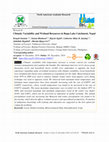
Climatic variability with temperature increase is serious concern for wetland resource management... more Climatic variability with temperature increase is serious concern for wetland resource management and regulates the benefits. Key informant interview (n=5), focus group discussion (n=4) and household survey (n=60) were undertaken to appraise the local experience regarding status of wetland resources with climatic variability. Local households were stratified and chosen close settlement as respondents for the study. Meteorological data from 1979 to 2009 were used to analyze climatic trends where least-squares curve fitting technique was used to appraise trend. We observed both maximum mean temperature and minimum mean temperature have been annually increasing with the rate of 0.049 0 C and 0.040 0 C respectively, where overall temperature was found to be increased at the rate of 0.045 0 C annually. The mean maximum temperature was recorded ever the highest 28 0 C in 2009, and seasonal maximum and minimum temperature trend of the winter was higher (0.051 and 0.067), which can be perceived as indication of global warming. The annual precipitation trend was increasing but Monsoon and winter precipitation was found to be decreasing, which directly affects wetland resource and agricultural productivity. Promotion of indigenous knowledge with training and education are suggested as the best option for coping the problems.
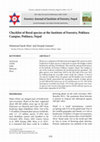
Forestry: Journal of Institute of Forestry, Nepal
Plants are a component of biodiversity and support life system on earth. Exploration of plant spe... more Plants are a component of biodiversity and support life system on earth. Exploration of plant species is important to aquire knowledge on plant biodiversity and their distribution. This study documents floral species in the Institute of Forestry, Pokhara Campus, Nepal. The Campus is one of the academic institutions for producing forestry graduates. The plant species were listed from 2020 to the first half of the year 2021 by walking along the accessible routes inside the Campus. A total of 331 species of plants from 276 genera and 99 families were recorded. Fabaceae family represented the maximum number of plant species (n=26) followed by Asteraceae (n=25) and Poaceae (n=21). 43% of the total species recorded were herbs. 31% of the total species were trees. 16 species were invasive alien plant species (IAPS) and four species are listed under Appendix-II of CITES.

Nepal has an abundance of opportunities for the ecotourism industry and is very rich in nature an... more Nepal has an abundance of opportunities for the ecotourism industry and is very rich in nature and culture. Despite having a lot of tourism potentialities there are still many places in Nepal that are yet to be explored. Gabhar valley is a beautiful village which has recently been listed as one of the 100 ecotourism destinations in Nepal. The objective of this study was to explore the potential eco-tourism attractions/features, ecotourism activities and perception of local people and visitors towards ecotourism in Gabhar valley. Data were collected through key informant interviews, questionnaire surveys with households, visitors and focus group discussions. Out of 440 households in the valley, 25 percent (n=110) households were selected randomly. Three point Likert scale disagree to agree (0-2) was employed in analyzing the perception of local people and visitors towards ecotourism. chi-square test was used to see the variation in the perception of local people. Simple descriptive s...
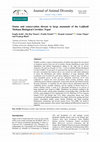
Journal of Animal Diversity
Wildlife corridors connect isolated patches of habitat and support the movement of migratory spec... more Wildlife corridors connect isolated patches of habitat and support the movement of migratory species from one site to another. Human disturbances cause forest degradation and habitat fragmentation adding to the high risk of species extinction. We laid out 44 grids of 2 km × 2 km in Laljhadi Mohana Biological Corridor (LMBC). In each grid, we generated line transects ranging from 1.5 to 2 km and a systematic line transect survey was carried out with single replication to assess the distribution and relative abundance of large mammals. GPS coordinates were recorded for each direct sighting or indirect sign. Similarly, a local household survey (n=40) and key informant interviews (n=9) were conducted to explore the local perception about existing problems, major conflicting species habitat components, conservation threats and attitude towards the large mammals. A workshop was also held to discuss information about the conflicting species, possible solutions, and the ranking of threats based on a relative ranking system. A total of 51 individuals belonging to six species of large mammals were found in LMBC. Distribution was primarily confined to the south of the corridor, and the relative abundance, in descending order, is the Blue bull (29.4%), Asian elephant (25.5%), Spotted deer (21.5%), Wild boar (15.7%), Common leopard (5.9%) and Bengal tiger (2%). Major conservation threats were forest encroachment and habitat fragmentation (Very High), followed by grazing and forest product consumption (High), natural disaster (Medium) and illegal poaching, infrastructure construction, and invasive species (Low). The LMBC was found to support six large mammals, where mostly Asian elephants and Blue bull are using it for migration.

Understanding niche overlap with other wild species and domestic cattle is useful to conserve and... more Understanding niche overlap with other wild species and domestic cattle is useful to conserve and manage the wildlife in their natural habitat. We assessed habitat niche breadth and overlap among the two sympatric wild ungulates: spotted deer (Axis axis) and swamp deer (Cervus duvaucelii) and, indigenous intermediate ruminants, and domestic cattle in Shuklaphanta National Park, Nepal during the dry season. Our objective was to explore the interspecific competition by studying the habitat use by these species. The assumption was made that the presence of pellets is a proof for habitat used by species. Grid based surveys with total 96 sample plots each of size 20 m * 20 m in 6 sample grids (2 * 2 km2) with 24 sub-grids (500 * 500 m2) were used for locating pellets group. Levin’s niche breadth and Morisita’s overlap index were calculated to determine the niche breadth, and the habitat overlap respectively. The Levin’s measure of niche breadth suggested that spotted deer had the highest adaptability with an index value of 0.94 followed by domestic cattle 0.50, and swamp deer 0.33 in our study area. Thus, it was concluded that spotted deer is a habitat generalist whereas swamp deer are specialists and mostly preferred grasslands after a fire. Also, there was high habitat overlap index value of 0.83 between domestic cattle and spotted deer whereas the swamp deer and the spotted deer showed moderate habitat overlap of 0.57. The swamp deer had low habitat overlap as well as spatial overlap with domestic cattle. Grassland management should be carried out for the benefit of ungulate species as the study showed the preference of swamp deer on grassland after a fire. Similar studies should be conducted including seasons and places prior to implementing appropriate habitat management activities intended to reduce interspecific competition for co-existence.

The Gaze: Journal of Tourism and Hospitality
Tourism sector, a major backbone in revenue generation in Nepal having an immense potentiality is... more Tourism sector, a major backbone in revenue generation in Nepal having an immense potentiality is hardly hit by the ongoing COVID-19 pandemic that has suspended Visit Nepal Year 2020, with a theme, an experience of a life-time. This remarkable campaign is also a national development strategy in the tourism history of Nepal which aimed at attracting around 2 million foreigners from all over the world. This article is designed to explore about COVID-19 Pandemic lockdown impacts on tourism industries and Visit Nepal year 2020 Campaign. For these, secondary literature available in Google Scholar, Research Gate and, recently published newspapers were accessed. The result shows that the unprecedented and uncertain lockdown stuck millions of people in their home, lower the economic activities of different sectors of the tourism industry including hotels, homestays, travel and tours, impact on remittance, a collapse of small industries and suspension of mega projects and many more. In addit...

Environment, Development and Sustainability
Residents’ willingness-to-pay for watershed conservation plays a crucial role in developing susta... more Residents’ willingness-to-pay for watershed conservation plays a crucial role in developing sustainable market-based ecological protection strategies. The main objective of this study was to assess local residents’ willingness-to-pay for the protection and conservation of the Begnas watershed ecosystem services, which was estimated using a contingent valuation method. Particularly, the study assessed the factors that affect the residents' willingness-to-pay using the Heckit model generating knowledge crucial to design watershed conservation programs and market-based protection strategies. The total willingness-to-pay was worth of $203,598.15 year−1, and the average annual willingness-to-pay of a household (US$ 33.95) indicated the high importance of Begnas watershed conservation. Likewise, the results from econometric modeling showed a positive relationship between factors, namely gender (male resident), household size, education level, occupation (tourism and agriculture), income, and landholding size with the residents' decision to pay for the watershed conservation. These findings imply that a public-funded watershed conservation program is feasible in the Begnas watershed. Further, local resident participation in the program is seen increased because of the potential improvement in watershed ecosystem services, which are directly related to their livelihoods.

Sissoo (Dalbergia sissoo) is a deciduous tree, native to Nepal and the Indian subcontinent. The t... more Sissoo (Dalbergia sissoo) is a deciduous tree, native to Nepal and the Indian subcontinent. The tree is traditionally used for making furniture, fodder and herbal medicine. It is also used as shelter-wood, and in conserving soil in degraded areas. This review focuses on the health management practices against pathogenic constraints in sissoo. Literature published till June 2020 was considered to understand the biology of the tree species and associated pathogens apart from understanding the management practices to treat the diseases. Despite the massive significance of this tree, available publications on the pathogenic risks and the strategies to cope with them are unnoticed so far. This article expects to bring together information on sissoo tree&#39;s biology, pathogen attacks and its management. Of various fungal diseases in sissoo, this article deals with only two of the fungal diseases, Fusarium solani and Ganoderma lucidum, which cause dieback and root rot in sissoo, respectively. The findings highlighted can further reinforce the current sissoo management and pathogen control strategies and improve its health to augment high quality timber.
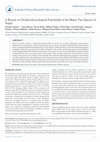
Several researches related to dendrochronological field are carried out in Nepal. Silvicultural c... more Several researches related to dendrochronological field are carried out in Nepal. Silvicultural characteristics, distribution, associated species, climatic response of the species are very essential to understand the nature of species before conducting dendrochronological research. The objective of this research is to assess the dendrochronological potentiality of the major tree species so far studied in Nepal. For this, we have used Google engine to search published articles through March 2020 and listed out the name of the species used so far for the dendrochronological studies in Nepal. We were able to record the species Abies pindrow, Abies spectabilis, Betula utilis, Cedrus deodara, Cupressus torulosa, Larix potaninii, Picea smithiana, Pinus roxburghii, Pinus wallichiana, Rhodendendron campanulatum, Tsuga dumusa and Ulmus wallichiana from the published research articles and review articles till March 2020. We have also accessed why the dendrochronologist has chosen these specie...
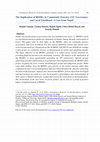
Contemporary Research: An Interdisciplinary Academic Journal
Nepal's decentralized forest governance has now included a new actor, i.e. REDD+ which is a m... more Nepal's decentralized forest governance has now included a new actor, i.e. REDD+ which is a mechanism based on market for mitigation of climate change through conservation of forest. This paper aims to shed lights on the REDD+ effect on community forestry governance, and local livelihood. For this various published articles and reports were reviewed and analyzed. Organizations like ICIMOD, FECOFUN and ANSAB are leading a pilot project in community forestry on measurement of carbon and equalizing benefit. The major objective of the REDD+ program is to reduce forest carbon emissions by providing financial incentives for developing countries. The impacts of the implication of the REDD+ is more questionable preceding its 10th anniversary. Special income generating activities and awareness programs have been implemented by the REDD+ pilot project targeting the poor, women, disadvantaged groups and indigenous people. While some study findings show the REDD+ gave priority to the carbon...








Uploads
Papers by Deepak G A U T A M Tutunga